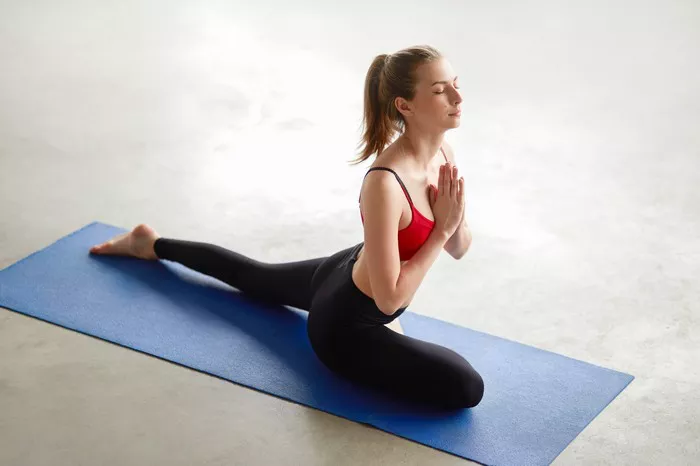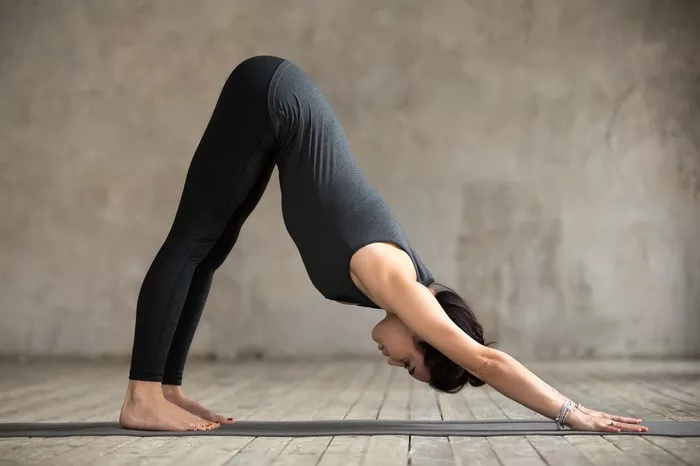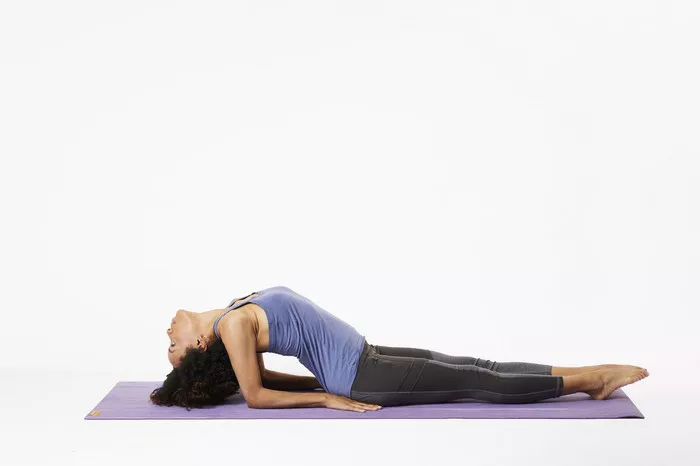Pregnancy is a miraculous journey filled with excitement and anticipation. However, it also comes with its fair share of discomforts, particularly in the hips. As the body undergoes significant changes to accommodate the growing baby, many expectant mothers experience hip pain and discomfort. While this is a common symptom, it can significantly impact daily activities and quality of life during pregnancy. Fortunately, prenatal yoga offers a gentle and effective way to alleviate hip pain while promoting overall well-being for both mother and baby.
Understanding Hip Pain During Pregnancy
Hip pain is a prevalent complaint among pregnant women, especially during the second and third trimesters. This discomfort typically arises due to a combination of factors, including:
Hormonal Changes: During pregnancy, the body produces higher levels of relaxin, a hormone that helps loosen ligaments in the pelvis to prepare for childbirth. However, this increased flexibility can also lead to instability and discomfort in the hips.
Weight Gain: As the baby grows, the mother’s center of gravity shifts forward, placing added pressure on the hips and pelvis.
Postural Changes: The expanding uterus and growing baby can cause changes in posture, leading to misalignment and strain on the hip joints and muscles.
Pressure on Sciatic Nerve: In some cases, the baby’s position or the expanding uterus can put pressure on the sciatic nerve, resulting in hip and lower back pain.
Stress and Tension: Emotional stress and physical tension can exacerbate hip pain during pregnancy, making relaxation techniques essential for relief.
The Benefits of Prenatal Yoga for Hip Pain
Prenatal yoga is a safe and gentle form of exercise specifically designed to support the unique needs of pregnant women. By incorporating mindful movement, breathing techniques, and relaxation, prenatal yoga offers a multitude of benefits for relieving hip pain and promoting overall well-being:
Gentle Stretching: Prenatal yoga poses gently stretch and lengthen the muscles surrounding the hips, alleviating tension and promoting flexibility.
Improved Circulation: The flowing movements and deep breathing in yoga help improve blood circulation, delivering oxygen and nutrients to the muscles and joints, which can reduce inflammation and discomfort.
Enhanced Stability: Practicing yoga strengthens the muscles supporting the hips and pelvis, providing greater stability and reducing the risk of injury.
Stress Relief: Yoga encourages relaxation and mindfulness, helping pregnant women manage stress and anxiety levels, which can contribute to hip pain.
Pelvic Floor Support: Certain yoga poses target the pelvic floor muscles, promoting strength and stability to support the growing uterus and relieve pressure on the hips.
Prenatal Yoga Poses for Hip Pain Relief
When practicing prenatal yoga to alleviate hip pain, it’s essential to prioritize safety and comfort. Listen to your body, and modify poses as needed to suit your individual needs and limitations. Here are some gentle prenatal yoga poses specifically tailored to target hip pain and discomfort:
1. Cat-Cow Stretch (Marjaryasana-Bitilasana):
- Start on your hands and knees in a tabletop position, with your wrists aligned under your shoulders and knees under your hips.
- Inhale, arch your back, and lift your tailbone and chest towards the ceiling, creating a gentle backbend (cow pose).
- Exhale, round your spine, tuck your chin to your chest, and draw your belly button towards your spine (cat pose).
- Continue flowing between cat and cow poses, coordinating your movements with your breath for several rounds.
Benefits: The cat-cow stretch gently mobilizes the spine and pelvis, releasing tension in the hips and lower back.
2. Bound Angle Pose (Baddha Konasana):
- Sit on a yoga mat with your legs extended in front of you.
- Bend your knees and bring the soles of your feet together, allowing your knees to fall open to the sides.
- Hold onto your ankles or feet with your hands, sitting up tall with a straight spine.
- Gently press your knees towards the mat while keeping your pelvis grounded.
- Hold the pose for several breaths, feeling a gentle stretch in the inner thighs and hips.
Benefits: Bound angle pose helps open the hips and groin area, relieving tension and discomfort.
3. Wide-Legged Forward Fold (Prasarita Padottanasana):
- Stand at the top of your mat with your feet parallel and wider than hip-width apart.
- Inhale, lengthen your spine, and engage your core muscles.
- Exhale, hinge at the hips, and fold forward, bringing your hands to the mat or holding onto your ankles.
- Allow your head to hang heavy, relaxing your neck and shoulders.
- Hold the pose for several breaths, feeling a deep stretch in the inner thighs and hamstrings.
Benefits: This pose stretches the inner thighs and hamstrings while also releasing tension in the hips and lower back.
4. Pigeon Pose (Eka Pada Rajakapotasana):
- Begin in a tabletop position with your wrists under your shoulders and knees under your hips.
- Slide your right knee forward towards your right wrist, positioning your right ankle near your left wrist.
- Extend your left leg behind you, keeping your hips square and level.
- Inhale, lengthen your spine, and exhale, slowly lower your torso towards the mat, resting on your forearms or a block for support.
- Hold the pose for several breaths, focusing on deepening the stretch in the right hip and glute.
Benefits: Pigeon pose targets the hip flexors and outer hips, helping release tension and improve flexibility.
5. Supported Bridge Pose (Setu Bandhasana):
- Lie on your back with your knees bent and feet hip-width apart, heels close to your buttocks.
- Place a yoga block or bolster under your sacrum for support.
- Press into your feet and lift your hips towards the ceiling, engaging your glutes and thighs.
- Keep your shoulders grounded and relax your arms by your sides or clasp your hands underneath you.
- Hold the pose for several breaths, focusing on opening the front of the hips and chest.
Benefits: Supported bridge pose gently stretches the hip flexors while also providing support for the lower back.
Tips for Practicing Prenatal Yoga Safely
While prenatal yoga can offer significant relief for hip pain during pregnancy, it’s essential to practice with caution and mindfulness. Here are some tips to ensure a safe and comfortable practice:
1. Consult with Your Healthcare Provider: Before starting any exercise program, including prenatal yoga, consult with your healthcare provider to ensure it’s safe for you and your baby.
2. Listen to Your Body: Pay attention to how you feel during each pose and modify as needed to avoid discomfort or strain. Honor your body’s limitations and avoid pushing yourself too hard.
3. Stay Hydrated: Drink plenty of water before, during, and after your yoga practice to stay hydrated and support your body’s needs during pregnancy.
4. Use Props for Support: Don’t hesitate to use props such as blocks, bolsters, or blankets to modify poses and provide additional support where needed.
5. Practice Mindful Breathing: Incorporate deep, diaphragmatic breathing throughout your yoga practice to promote relaxation and reduce stress.
6. Avoid Overstretching: Pregnancy hormones make your joints more flexible, so be mindful not to overstretch or push beyond your normal range of motion to prevent injury.
7. Take Rest Breaks: If you feel fatigued or overwhelmed, take breaks as needed to rest and recharge. Listen to your body’s cues and prioritize self-care.
Conclusion
Prenatal yoga offers a gentle and effective way to relieve hip pain during pregnancy while promoting overall well-being for expectant mothers. By incorporating mindful movement, breathing techniques, and relaxation, prenatal yoga can help alleviate discomfort, improve flexibility, and reduce stress levels. When practiced safely and mindfully, prenatal yoga can be a valuable tool for supporting a healthy and comfortable pregnancy journey. Remember to consult with your healthcare provider before starting any new exercise routine and listen to your body’s needs throughout your practice. With regular practice and proper guidance, prenatal yoga can be a transformative and empowering experience for both body and mind during this special time.


















